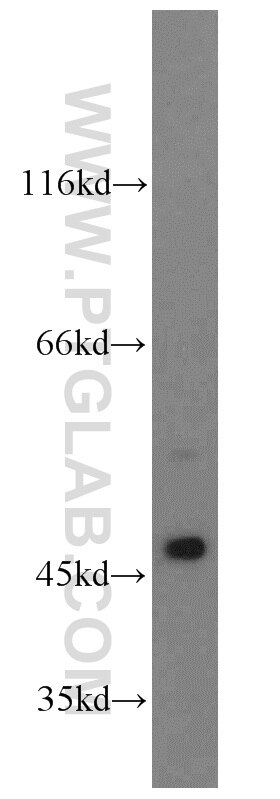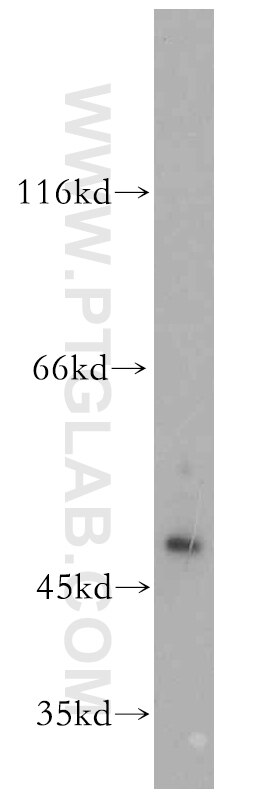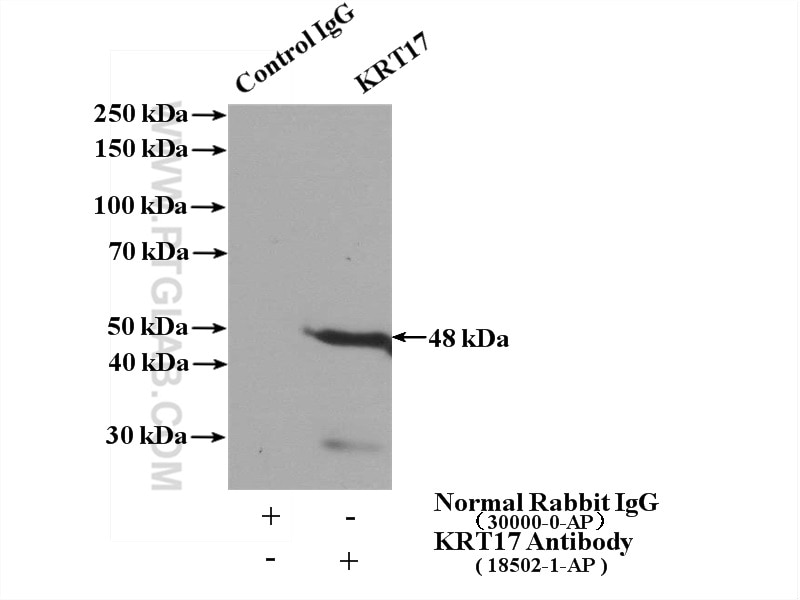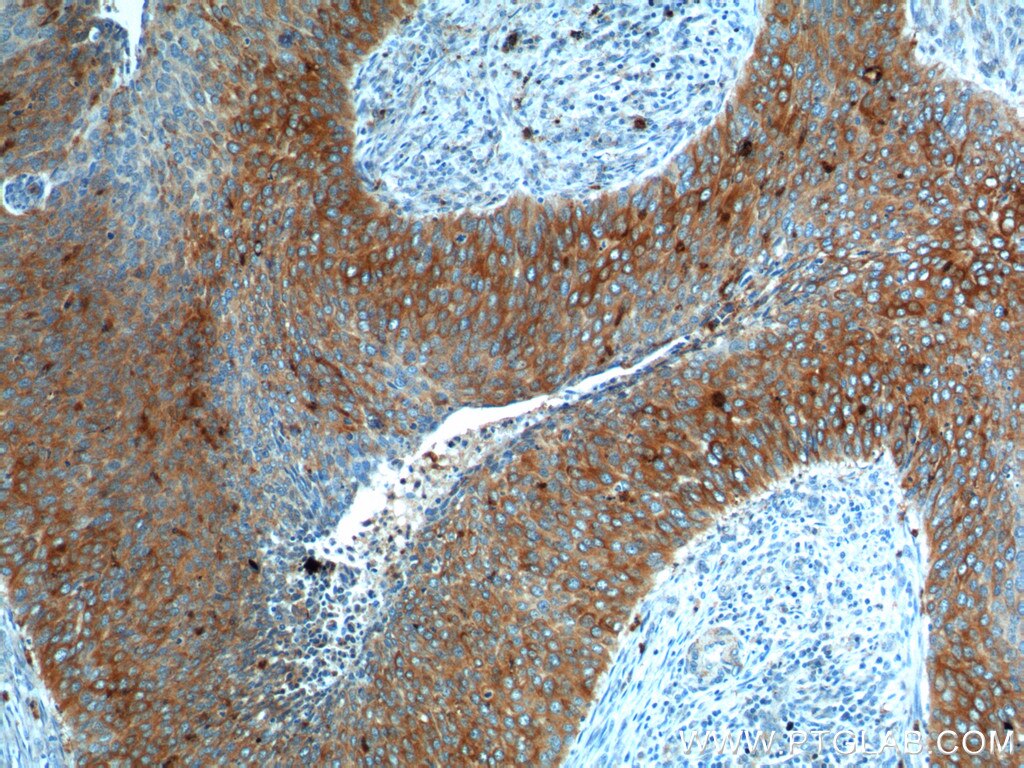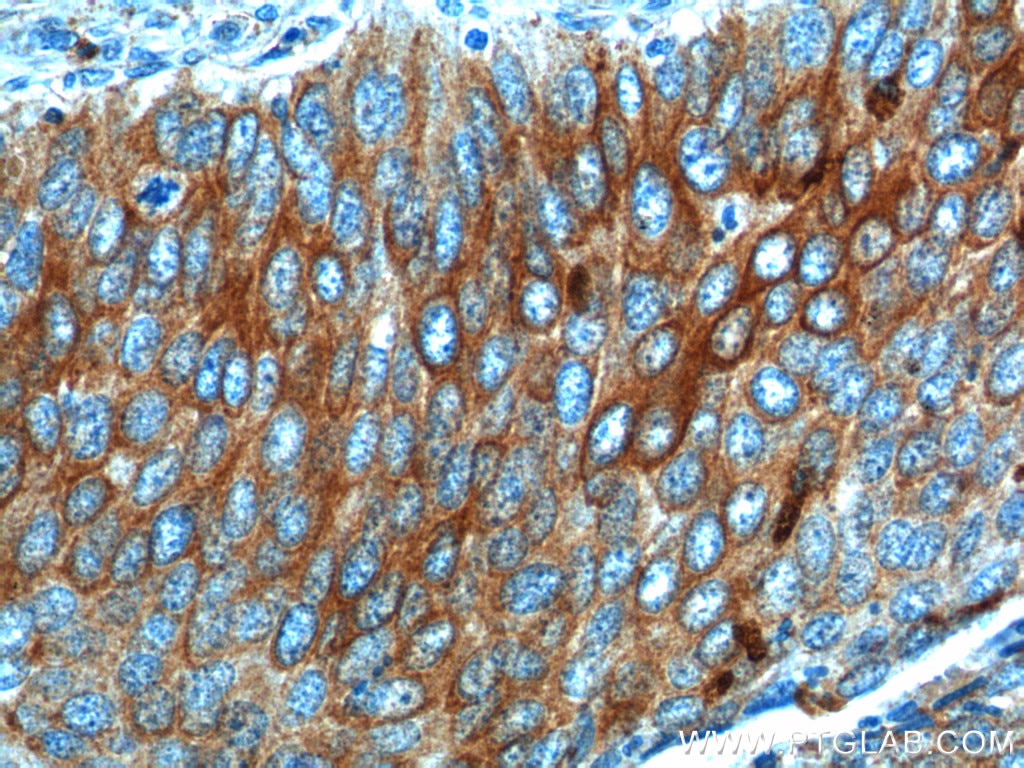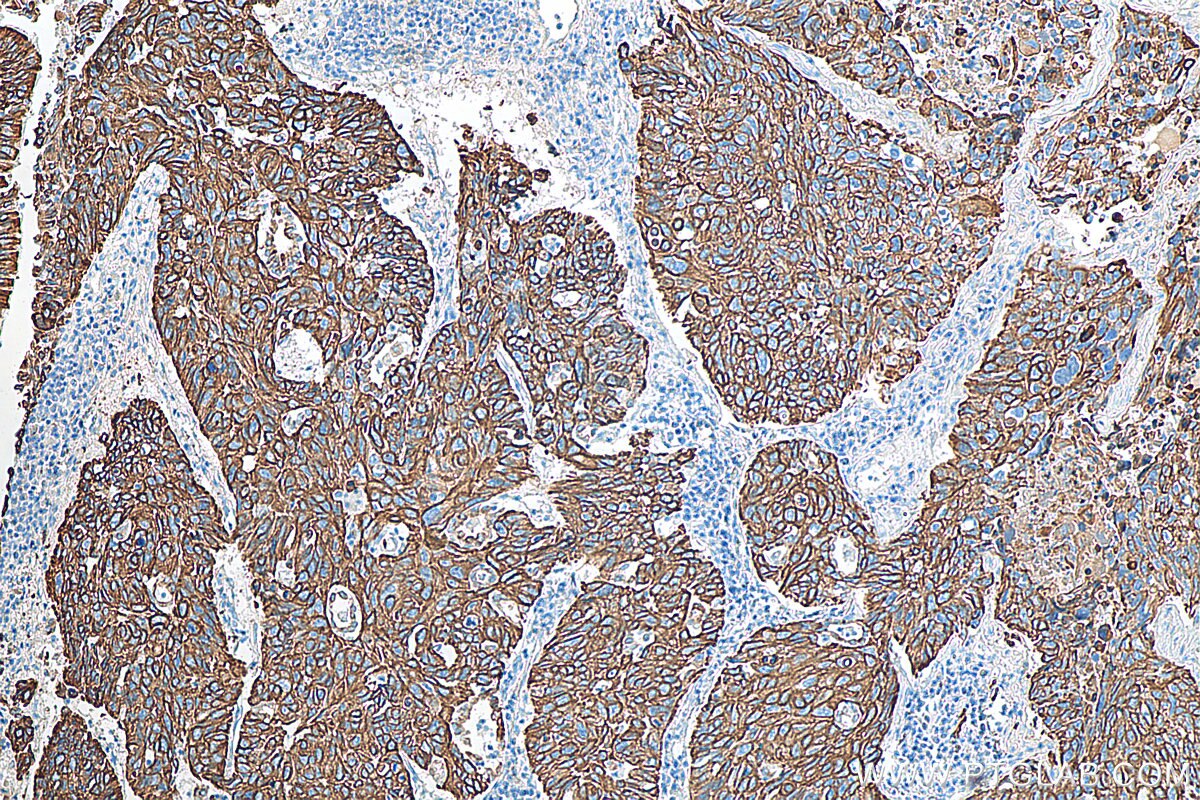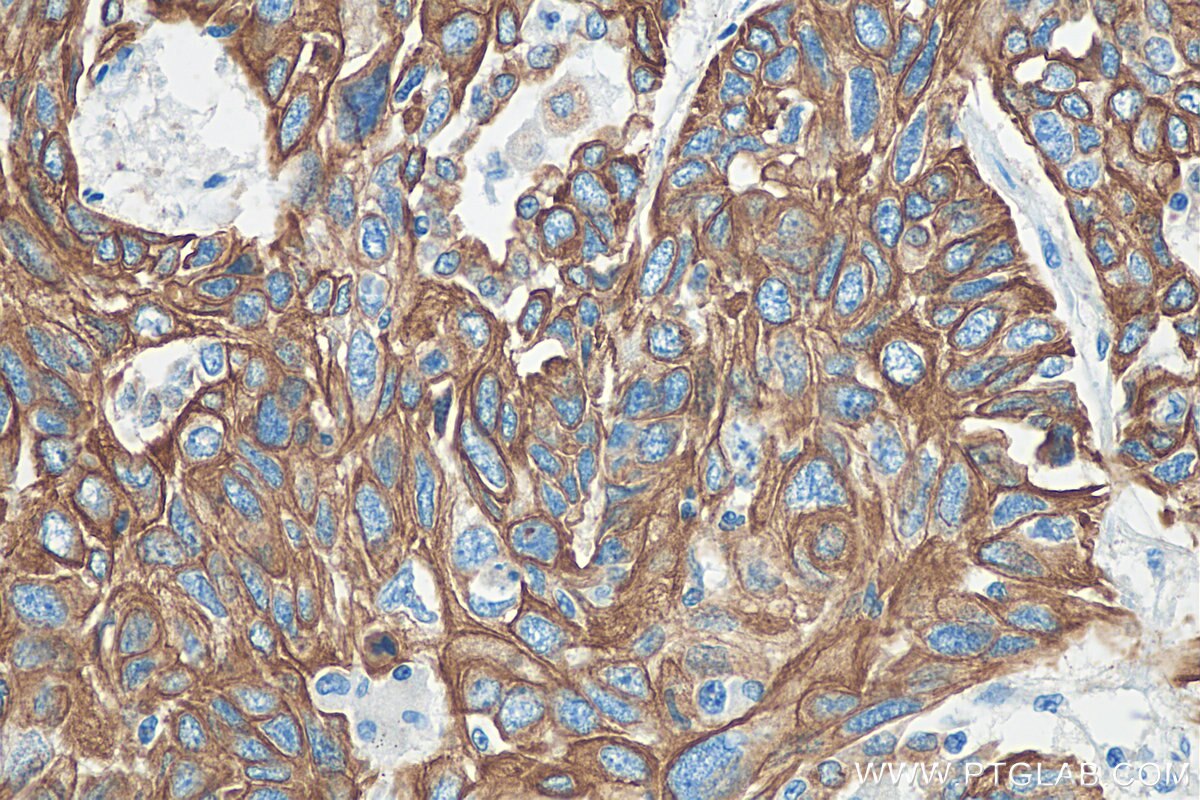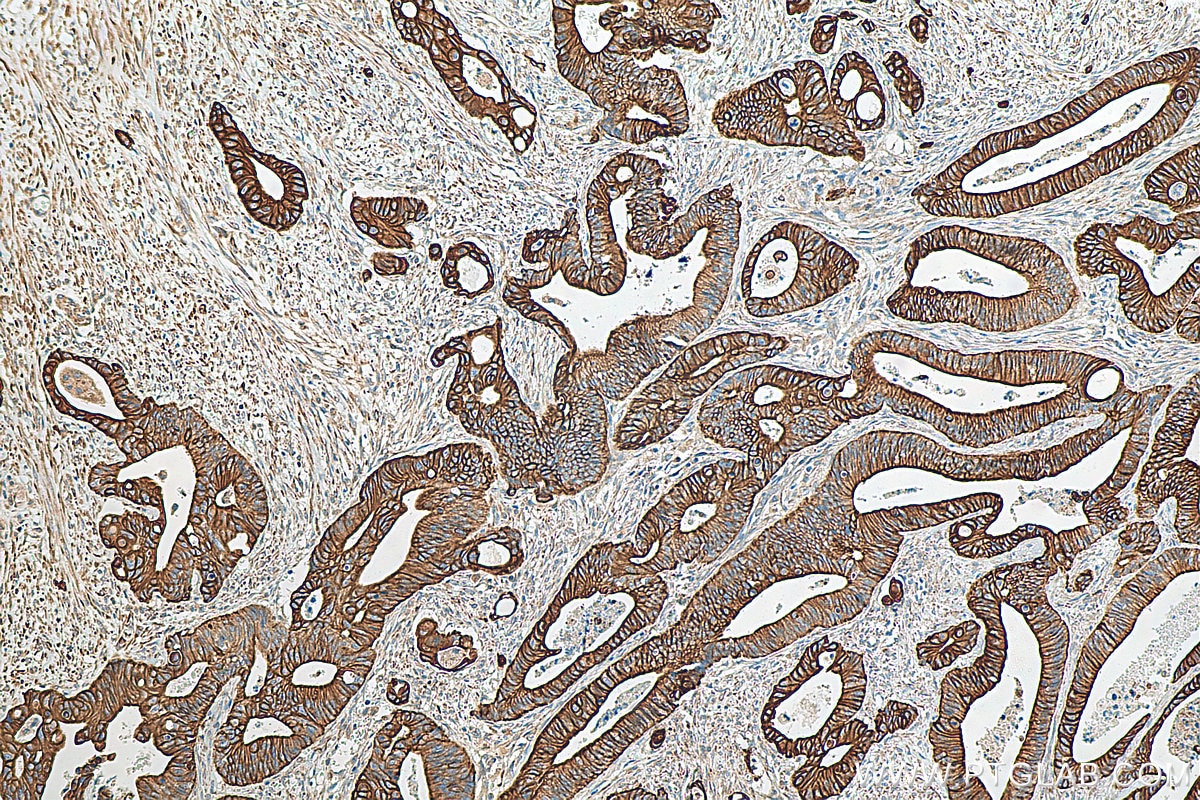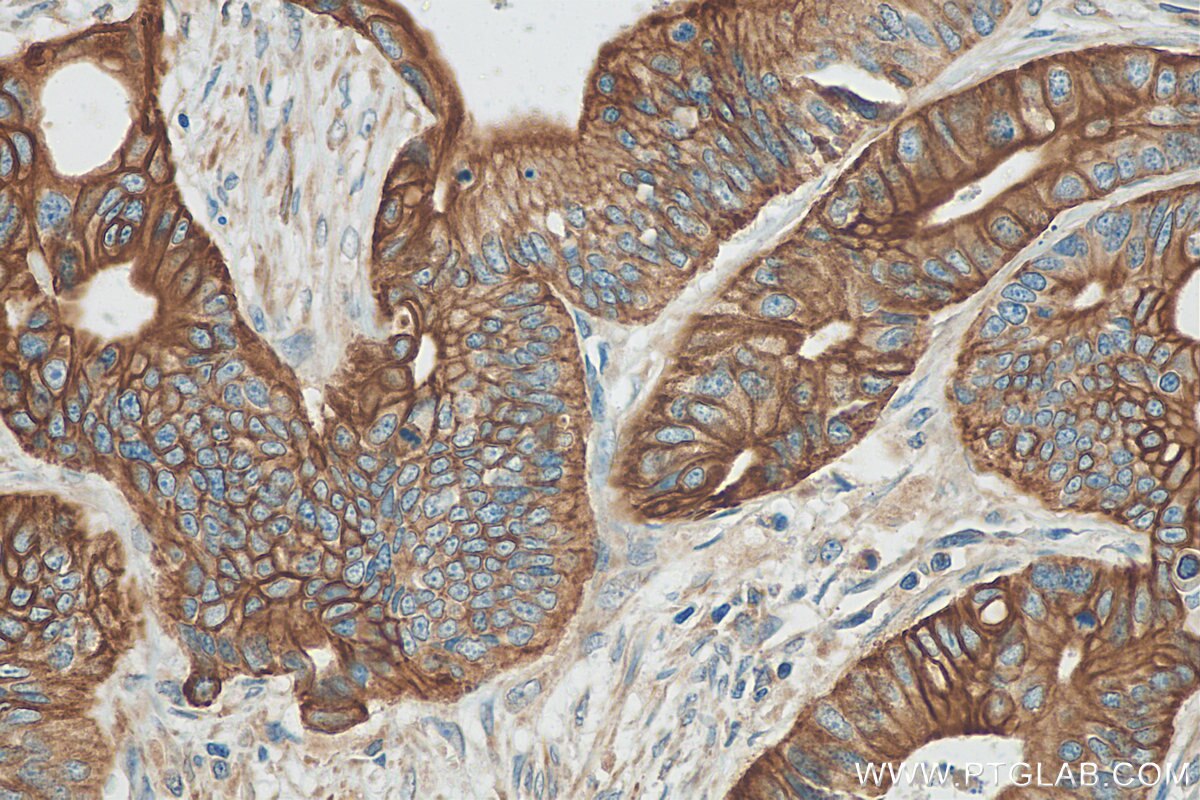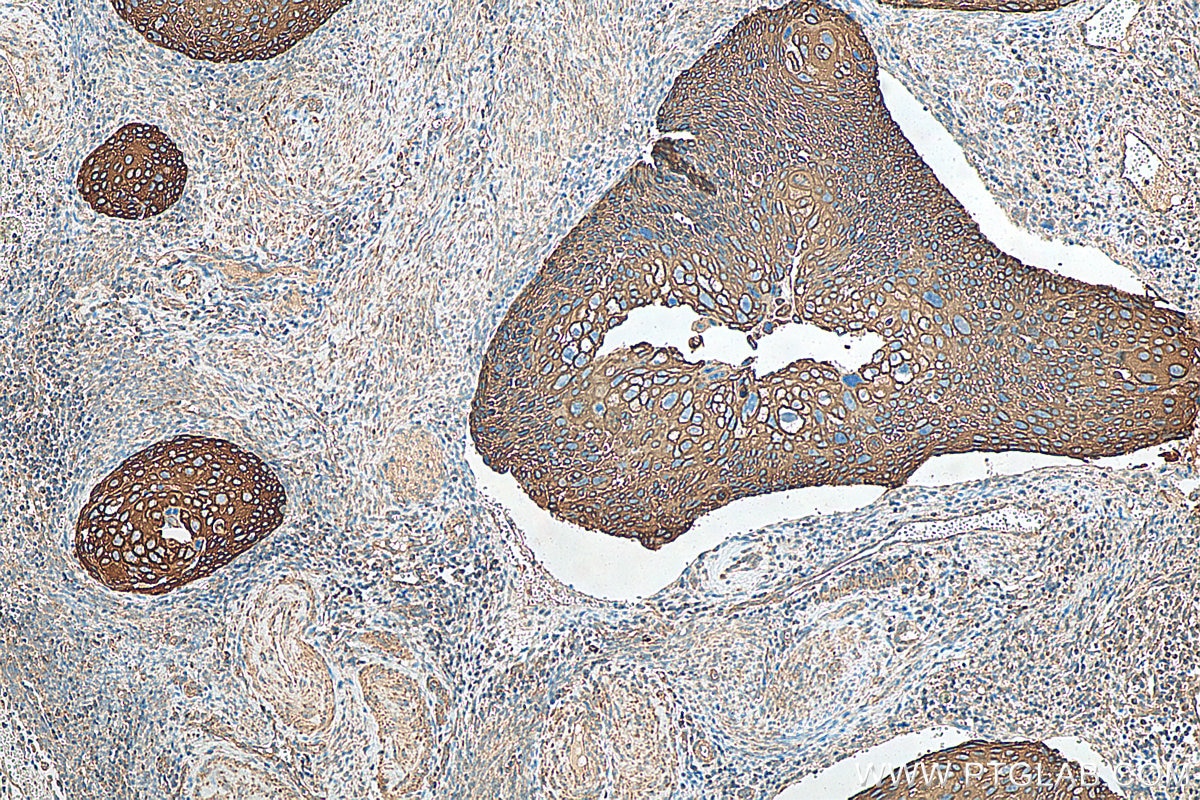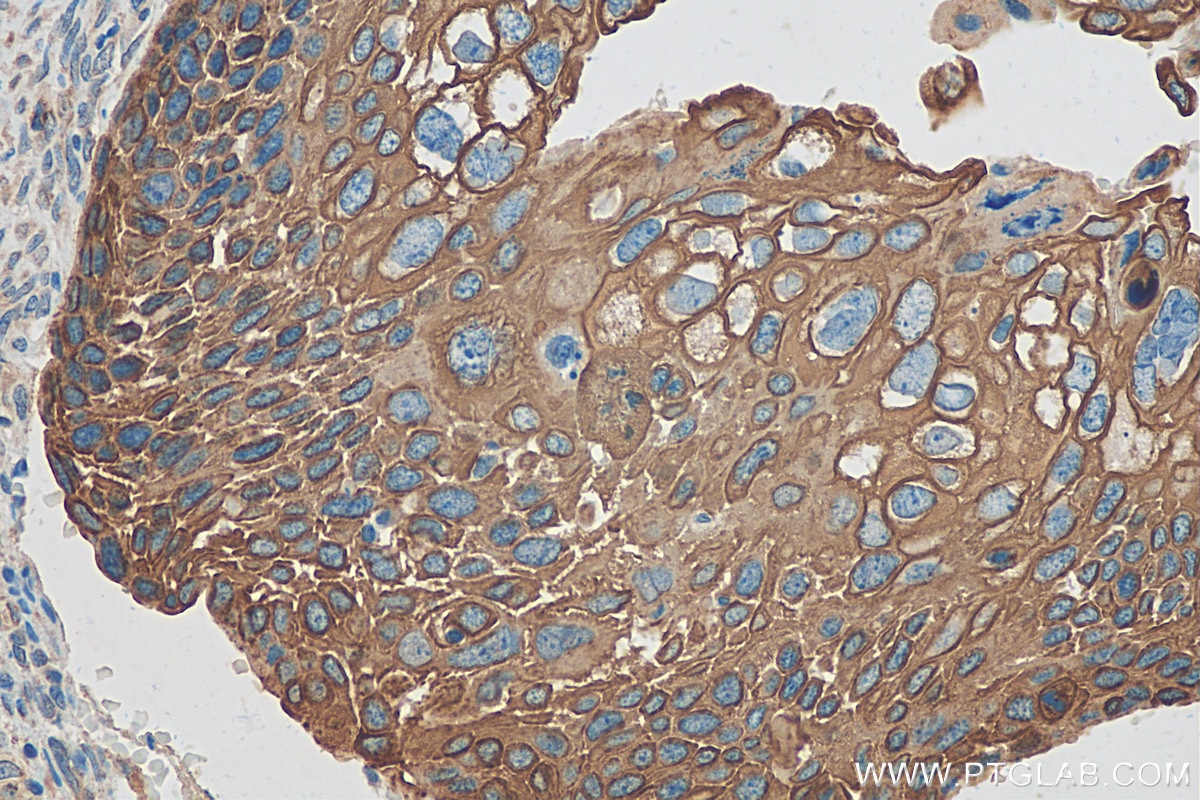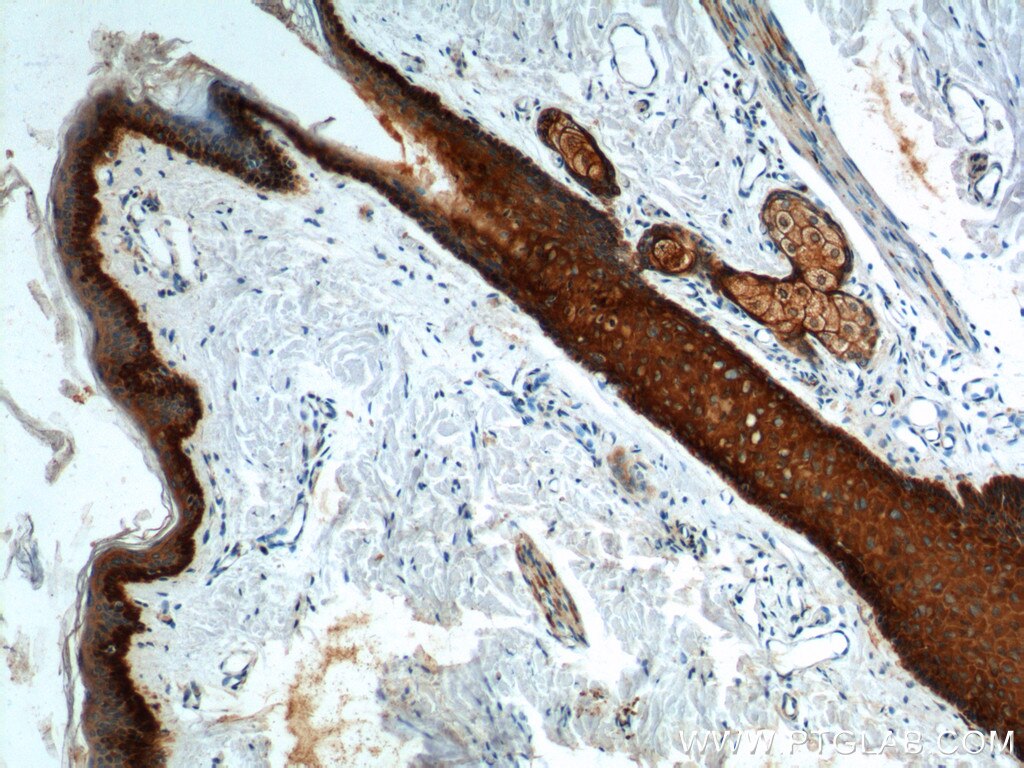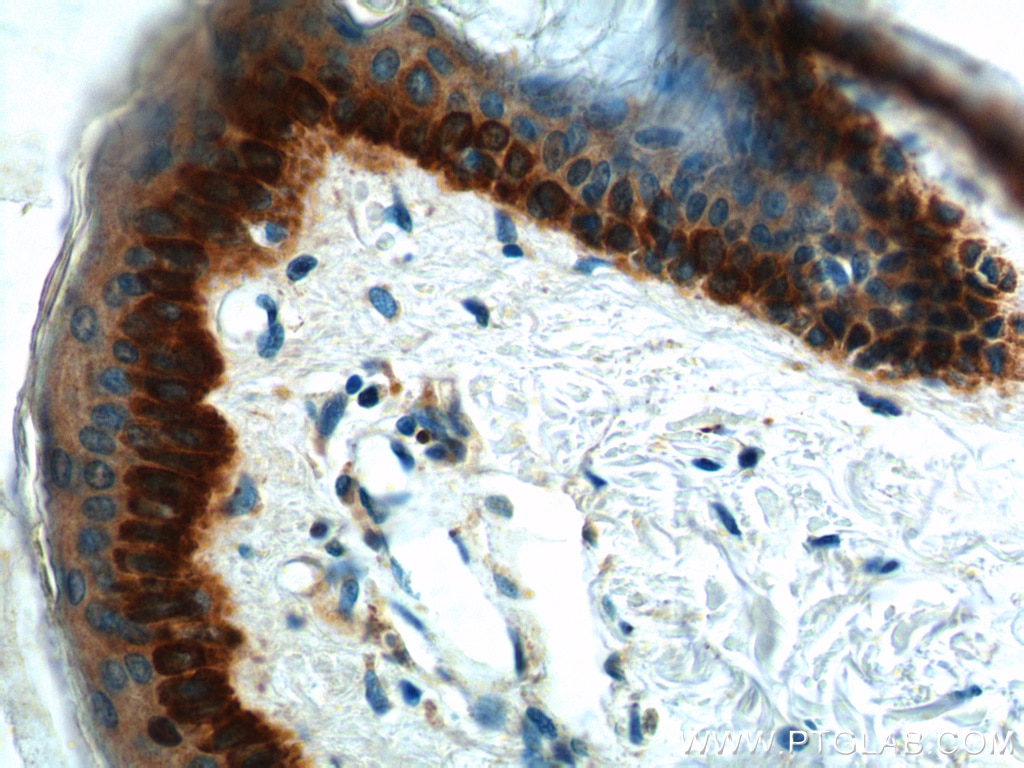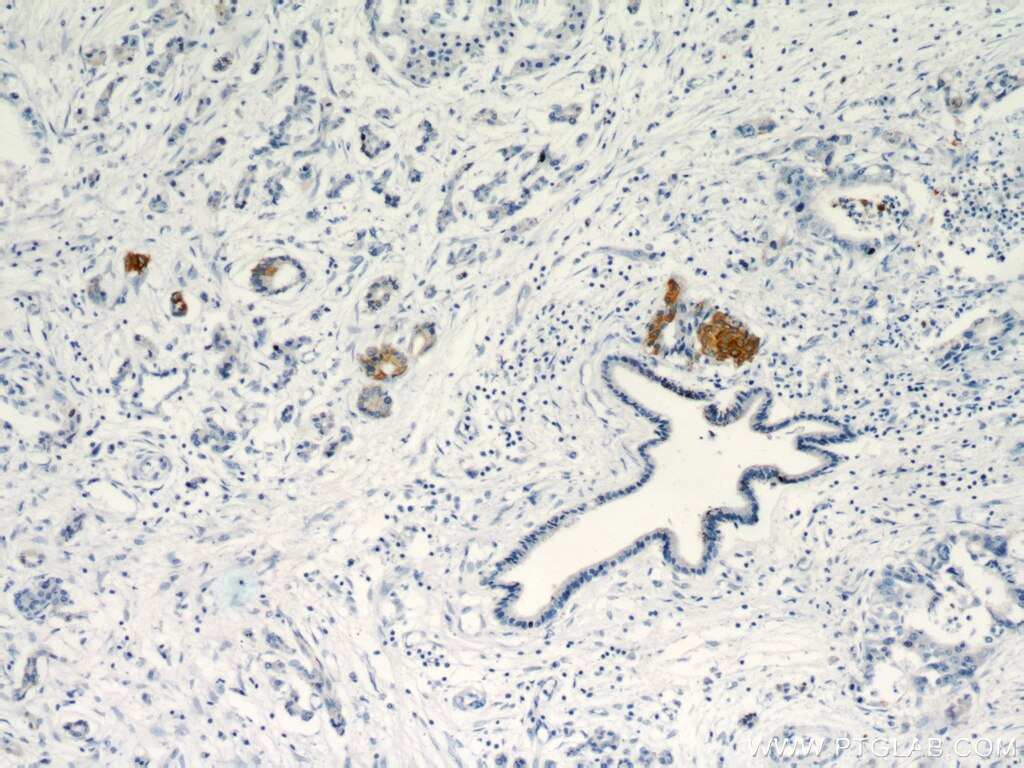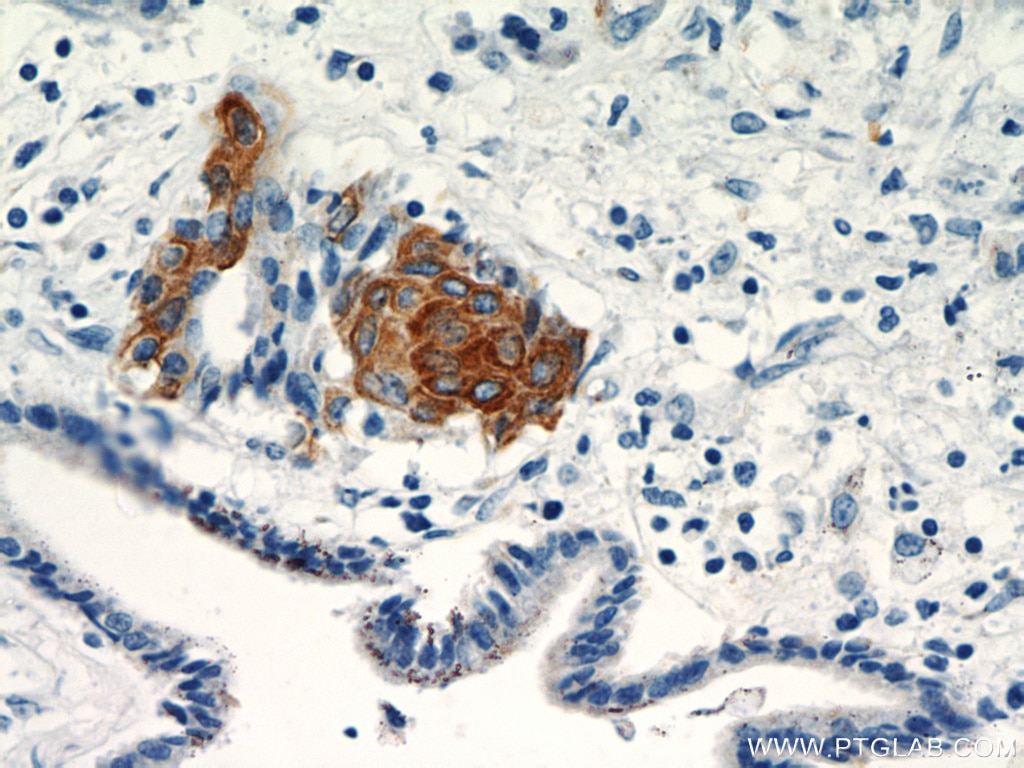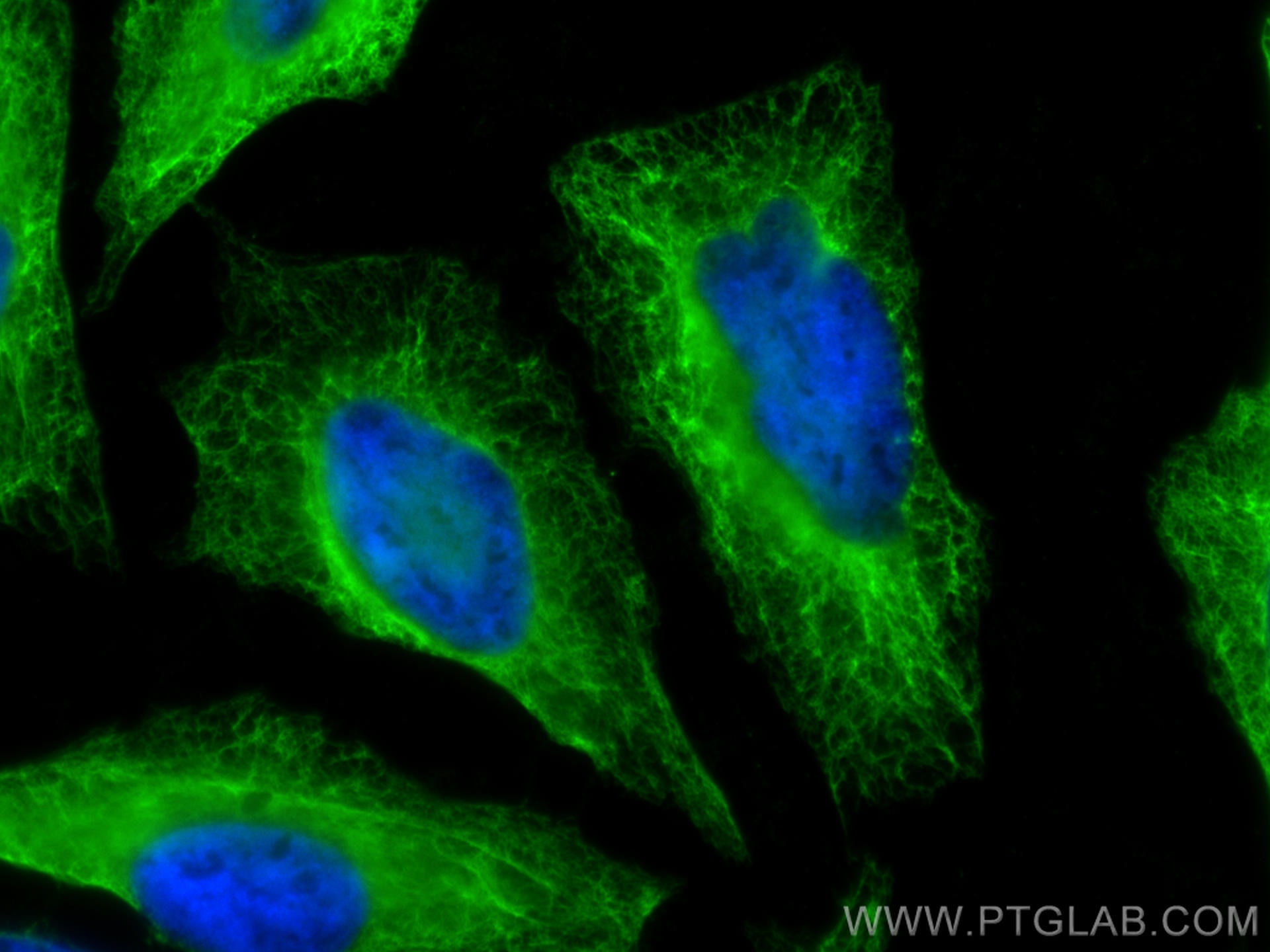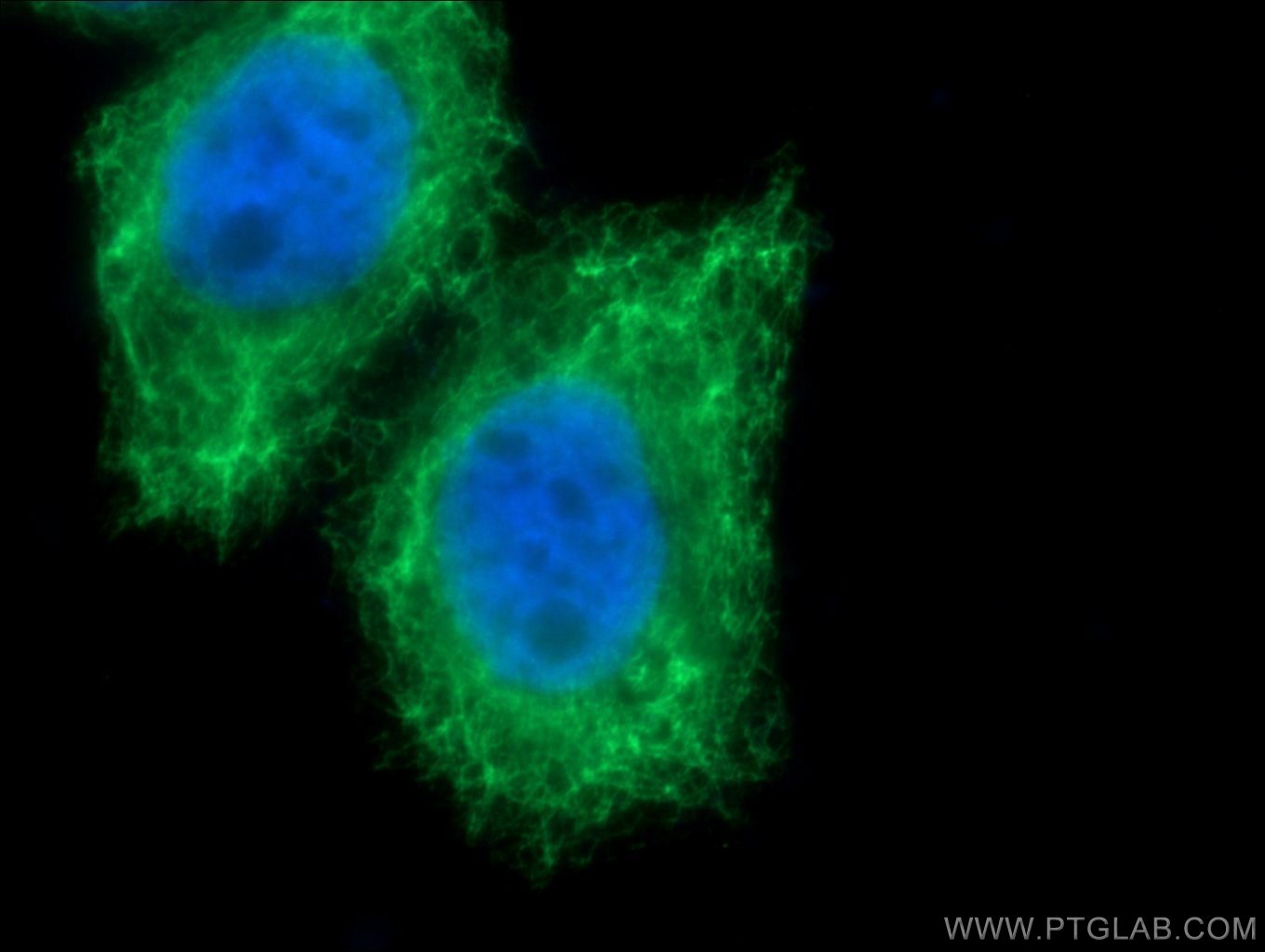Cytokeratin 17 Polyklonaler Antikörper
Cytokeratin 17 Polyklonal Antikörper für WB, IHC, IF/ICC, IP, ELISA
Wirt / Isotyp
Kaninchen / IgG
Getestete Reaktivität
human, Maus, Ratte und mehr (1)
Anwendung
WB, IHC, IF/ICC, IP, ELISA
Konjugation
Unkonjugiert
Kat-Nr. : 18502-1-AP
Synonyme
Geprüfte Anwendungen
| Erfolgreiche Detektion in WB | HeLa-Zellen, A431-Zellen |
| Erfolgreiche IP | HeLa-Zellen |
| Erfolgreiche Detektion in IHC | humanes Zervixkarzinomgewebe, humanes Kolonkarzinomgewebe, humanes Lungenkarzinomgewebe, humanes Pankreaskarzinomgewebe, humanes Hautgewebe Hinweis: Antigendemaskierung mit TE-Puffer pH 9,0 empfohlen. (*) Wahlweise kann die Antigendemaskierung auch mit Citratpuffer pH 6,0 erfolgen. |
| Erfolgreiche Detektion in IF/ICC | HeLa-Zellen |
Empfohlene Verdünnung
| Anwendung | Verdünnung |
|---|---|
| Western Blot (WB) | WB : 1:500-1:3000 |
| Immunpräzipitation (IP) | IP : 0.5-4.0 ug for 1.0-3.0 mg of total protein lysate |
| Immunhistochemie (IHC) | IHC : 1:20-1:200 |
| Immunfluoreszenz (IF)/ICC | IF/ICC : 1:200-1:800 |
| It is recommended that this reagent should be titrated in each testing system to obtain optimal results. | |
| Sample-dependent, check data in validation data gallery | |
Veröffentlichte Anwendungen
| WB | See 2 publications below |
| IHC | See 2 publications below |
| IF | See 3 publications below |
| ELISA | See 1 publications below |
Produktinformation
18502-1-AP bindet in WB, IHC, IF/ICC, IP, ELISA Cytokeratin 17 und zeigt Reaktivität mit human, Maus, Ratten
| Getestete Reaktivität | human, Maus, Ratte |
| In Publikationen genannte Reaktivität | human, Maus, Ziege |
| Wirt / Isotyp | Kaninchen / IgG |
| Klonalität | Polyklonal |
| Typ | Antikörper |
| Immunogen | Cytokeratin 17 fusion protein Ag13351 |
| Vollständiger Name | keratin 17 |
| Berechnetes Molekulargewicht | 48 kDa |
| Beobachtetes Molekulargewicht | 48 kDa |
| GenBank-Zugangsnummer | BC011901 |
| Gene symbol | Cytokeratin 17 |
| Gene ID (NCBI) | 3872 |
| Konjugation | Unkonjugiert |
| Form | Liquid |
| Reinigungsmethode | Antigen-Affinitätsreinigung |
| Lagerungspuffer | PBS with 0.02% sodium azide and 50% glycerol |
| Lagerungsbedingungen | Bei -20°C lagern. Nach dem Versand ein Jahr lang stabil Aliquotieren ist bei -20oC Lagerung nicht notwendig. 20ul Größen enthalten 0,1% BSA. |
Hintergrundinformationen
Keratins are a large family of proteins that form the intermediate filaments that make up the cytoskeleton. Type I keratins are a group of acidic intermediate filament proteins and type II keratins are the basic or neutral counterparts. Keratin 17 is encoded by the KRT17 gene and is a type I cytokeratin found in nail beds, hair follicles, sebaceous glands, and epidermal appendages.
What is the molecular weight of cytokeratin 17?
The molecular weight of cytokeratin 17 is approximately 49 kDa.
What is the function of cytokeratin 17?
Cytokeratin 17 plays a role in the formation and maintenance of epidermal appendages, especially in determining the shape and orientation of hair. It is required for the maintenance of the anagen (growth) state of hair follicles by modulating the function of TNF-alpha for hair cycling and is also involved in tissue repair (PMID: 16702408).
What is the cellular localization of cytokeratin 17?
Cytokeratin 17 expression is located in the cytoplasm.
What is the tissue specificity of cytokeratin 17?
Cytokeratin 17 expression is found in the outer root sheath and medulla regions of the hair follicle, particularly in the eyebrow, beard, nail bed epithelium, basal cells of the oral epithelium, and sweat and mammary glands (PMID: 2451629). Expression can also be found in epithelial layers of the prostate and urinary bladder and cambial cells of the sebaceous gland at the protein level.
What is the role of cytokeratin 17 in disease?
Mutations in the KRT17 gene are a cause of Jackson-Lawler type pachyonychia congenita type 2 (PC2); an autosomal dominant ectodermal dysplasia characterized by hypertrophic nail dystrophy (PMID: 7539673). Defects in KRT17 also lead to steatocystoma multiplex (SM) (PMID: 9767294). Cytokeratin 17 acts as an autoantigen in the immunopathogenesis of psoriasis (PMID: 23722817).
Protokolle
| PRODUKTSPEZIFISCHE PROTOKOLLE | |
|---|---|
| WB protocol for Cytokeratin 17 antibody 18502-1-AP | Protokoll herunterladen |
| IHC protocol for Cytokeratin 17 antibody 18502-1-AP | Protokoll herunterladenl |
| IF protocol for Cytokeratin 17 antibody 18502-1-AP | Protokoll herunterladen |
| IP protocol for Cytokeratin 17 antibody 18502-1-AP | Protokoll herunterladen |
| FC protocol for Cytokeratin 17 antibody 18502-1-AP | Download protocol |
| STANDARD-PROTOKOLLE | |
|---|---|
| Klicken Sie hier, um unsere Standardprotokolle anzuzeigen |
Publikationen
| Species | Application | Title |
|---|---|---|
J Anim Sci Biotechnol Establishment of goat mammary organoid cultures modeling the mammary gland development and lactation | ||
J Endocr Soc KRT17 From Keratinocytes With High Glucose Stimulation Inhibit Dermal Fibroblasts Migration Through Integrin α11 | ||
Research (Wash D C) Aggregation-Induced Emission-Active Photosensitizer-Mediated Photodynamic Therapy for Anti-Psoriasis | ||
J Inflamm Res CORM-3 Inhibits the Inflammatory Response of Human Periodontal Ligament Fibroblasts Stimulated by LPS and High Glucose |
Rezensionen
The reviews below have been submitted by verified Proteintech customers who received an incentive for providing their feedback.
FH Karlheinz (Verified Customer) (08-24-2025) | pAB material was preliminary tested on a Test line for a preliminary LFA for K17 recognition, by a manual dot with a 1 uL pipette on a nitrocellulose membrane. Despite its low concentration, pAB 0.35 mg/mL (instead of the usual 1 mg/mL), it captured MillePore Estaphore intense red PS microsphere conjugated to proprietary K17 mAB, proving it was compatible with the K17 recombinant protein, even if it had a His tag attached, and the proprietary K17 mAB.
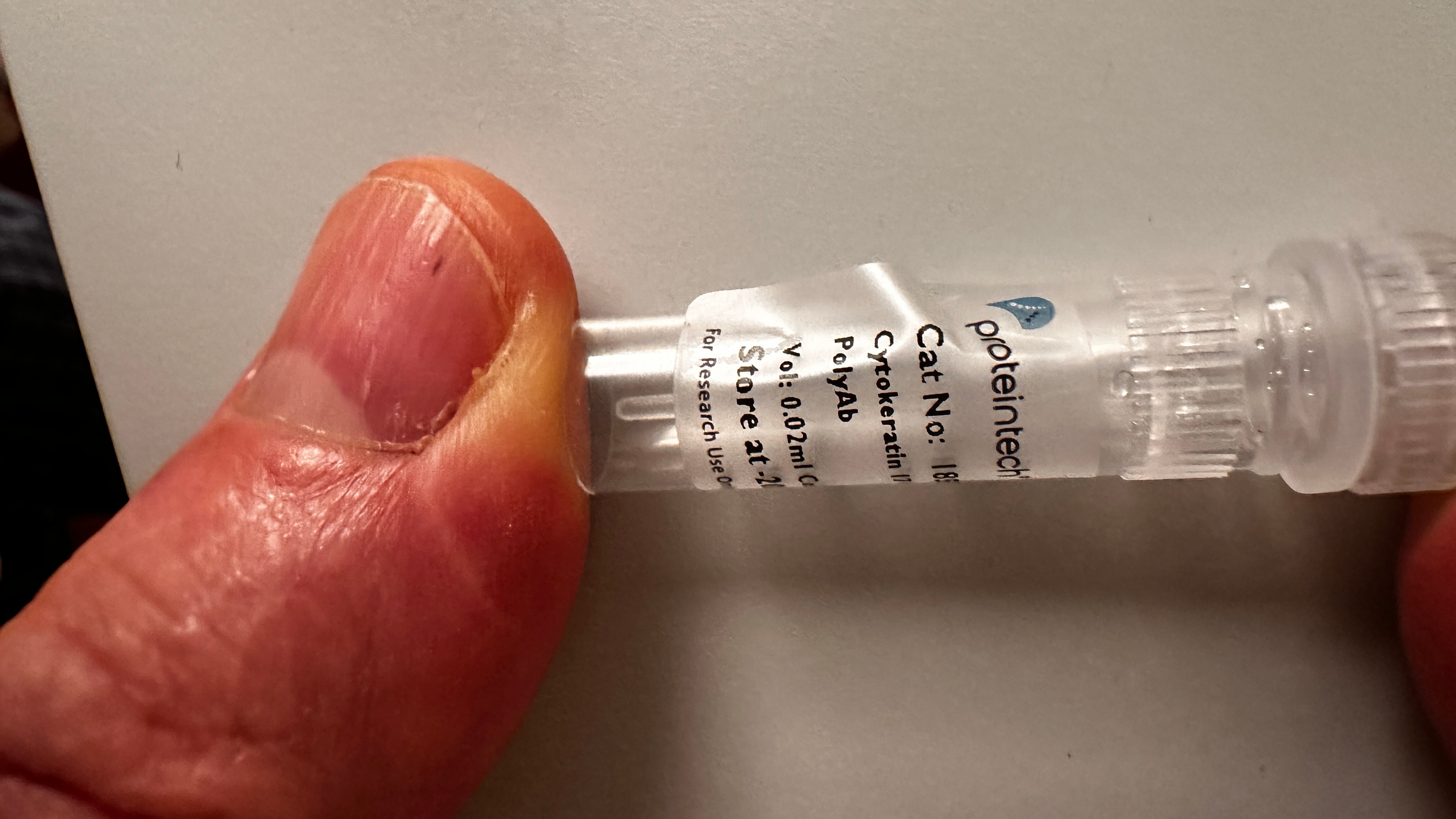 |
